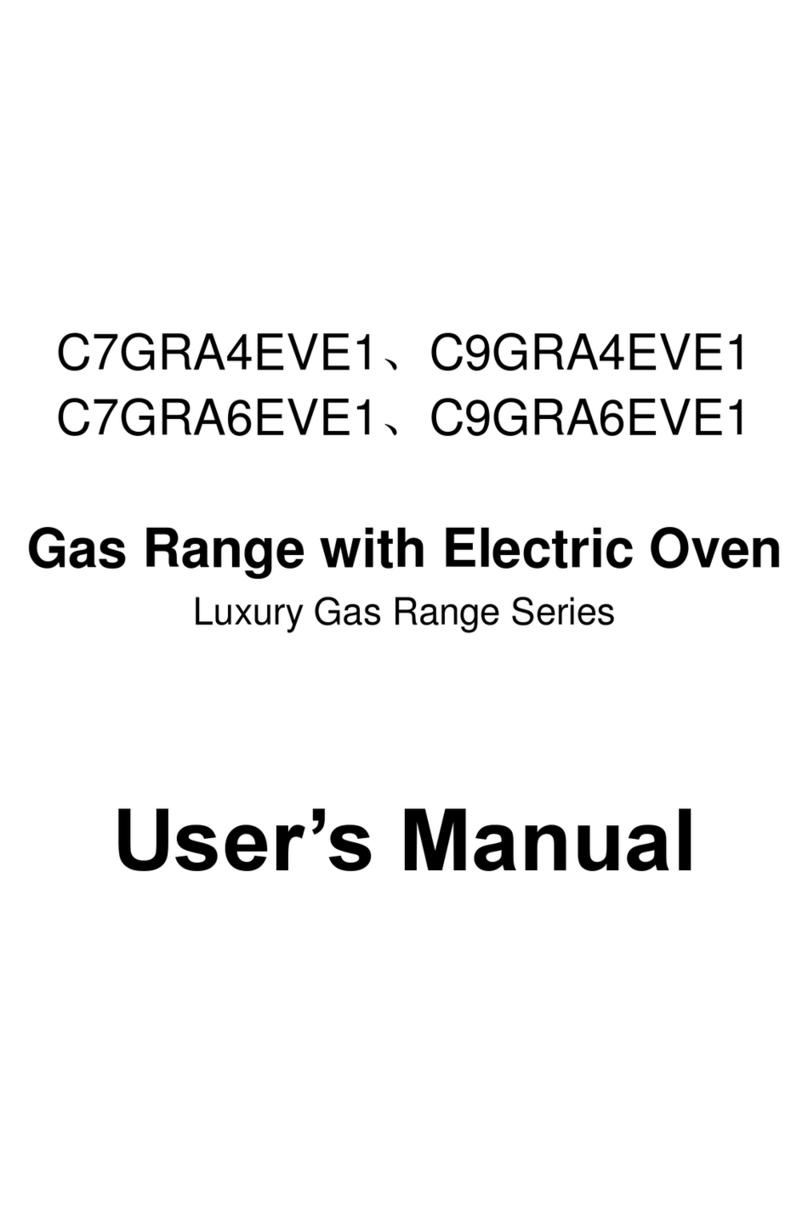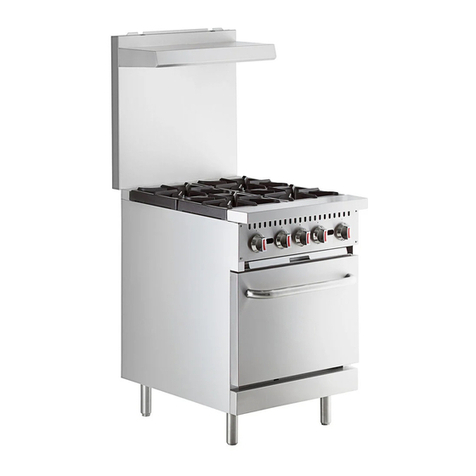
6
TO REDUCE THE RISK OF A STOVE TOP GREASE FIRE:
• Keep all fan, bafe, spaces, lter, grease tunnel, oil container
and grease-laden surfaces clean. Grease should not be
allowed to accumulate on fan, bafe, spaces, lter, grease
tunnel and oil container.
• Always turn range hood ON when cooking at high heat or
when cooking aming foods.
• Use high settings on cooking range only when necessary.
• Never leave surface units unattended at high settings. Boil
overs cause smoking and greasy spillovers that may ignite.
Heat oils slowly on low or medium settings.
• Clean ventilating fan frequently.
• Always use appropriate cookware and utensils size.
• Always use cookware appropriate for the size of the surface
element.
TO REDUCE THE RISK OF INJURY TO PERSONS IN THE EVENT OF A
STOVE TOP GREASE FIRE:
• SMOTHER FLAMES with a close-tting lid, cookie sheet, or
metal tray, then turn OFF the burner. BE CAREFUL TO PREVENT
BURNS. NEVER PICK UP A FLAMING PAN—you may be burned.
KEEP FLAMMABLE OR COMBUSTIBLE MATERIAL AWAY FROM
FLAMES. If the ames DO NOT go out immediately, EVACUATE
AND CALL THE FIRE DEPARTMENT or dial your local emergency
service immediately.
• DO NOT USE WATER, including wet dishcloths or towels — a
violent steam explosion will result.





























